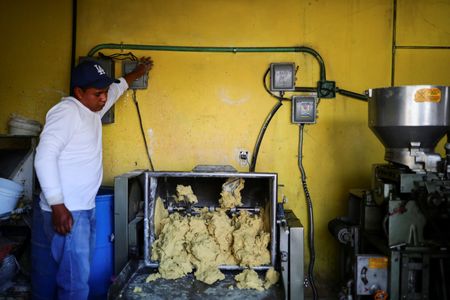MEXICO CITY (Reuters) – Mexican consumer prices rose 7.8% in the year through November, slowing down from the previous month to reach its lowest level since May even as the core index remains a concern, data from national statistics agency INEGI showed on Thursday.
Annual inflation in Latin America’s second-largest economy came in below market forecasts, as economists polled by Reuters had expected it to hit 7.93% in November, after standing at 8.41% in the previous month.
“Overall, this is a relatively good report,” said Pantheon Macroeconomics’ chief Latin America economist Andres Abadia, noting that headline inflation continued to ease thanks to the lagged effect of tighter financial conditions.
Soaring costs have led Mexico’s central bank to push for an aggressive monetary tightening since June 2021 – and despite cooling down, inflation remains well above the central bank’s target of 3% plus or minus 1 percentage point.
The Bank of Mexico will hold its next monetary policy meeting next week, with the benchmark interest rate currently standing at a record 10% after a split decision last month.
On a monthly basis, consumer prices rose 0.58% in November, according to non-seasonally adjusted figures, below market consensus of 0.69%.
The core index, which strips out some volatile food and energy prices and has been a major concern in the country, rose 0.45% during the month, also below forecasts of 0.52%.
That represented a deceleration from October, when it had increased by 0.63%, but was still unlikely to provide a full relief as the 12-month rate came in at 8.51%, above the 8.42% seen in the previous month.
“Headline inflation peaked in late Q3, but core inflation remains relatively sticky. The latter will continue to make Banxico uneasy,” Abadia said, forecasting a fresh 50 basis-point rate hike next week despite the “first signs that core inflation is slowing at the margin”.
(Reporting by Mexico City newsroom and Gabriel Araujo; Editing by Steven Grattan)

